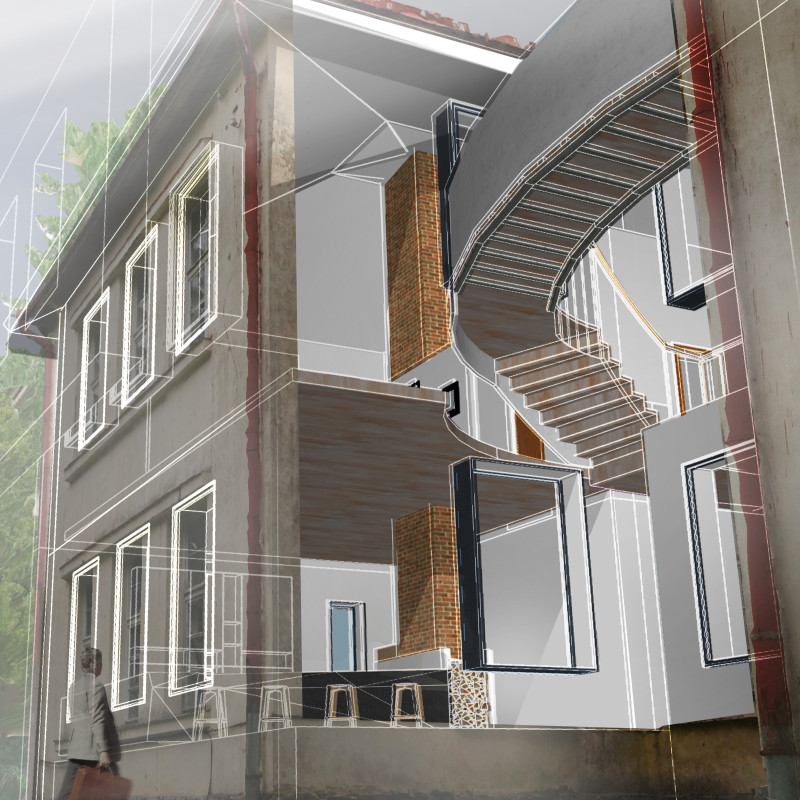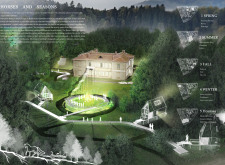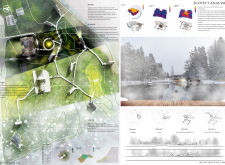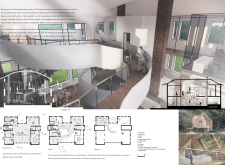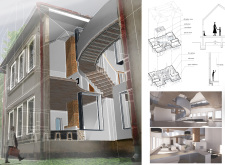5 key facts about this project
The renovation of the Omuli Primary School in Latvia offers a fresh perspective on a historic site. Located in the North Vidzeme Biosphere Reserve, the structure is being transformed into a multifunctional space that includes an artist's accommodation, a museum, and a cultural hub. The design concept marries local heritage with the surrounding natural environment, creating a place that encourages artistic expression and community engagement.
Architectural Concept
The design creates pathways that connect the historical elements of the building with the natural landscape and the region’s equine culture. These pathways encourage movement and interaction among visitors and artists, facilitating a sense of connection to the site. Well-placed corridors enhance accessibility and provide various vantage points to appreciate the beauty of the surrounding scenery, promoting an engaging experience.
Seasonal Integration
The project thoughtfully considers Latvia’s distinct four seasons. In spring, existing structures will be refreshed to highlight the emergence of nature. The design will embrace summer festivities like Mid-summer Day, with spaces for communal gathering around outdoor campfires. Autumn focuses on the local agricultural practices, emphasizing pasture and harvest activities. In winter, the project honors traditional sauna culture, incorporating features such as cold-water pools that invite seasonal enjoyment.
Cultural Focus
A notable aspect of the project is the Horse Culture Museum. This space will educate visitors about local horse breeds, including the Ardenne horse. By focusing on this cultural element, the design preserves important local traditions and invites engagement with the region’s equestrian heritage. The museum serves as a focal point, encouraging community involvement and fostering a deeper appreciation of local history.
Design Details
While specific materials are not outlined, it is understood that construction methods will be suitable for Latvia's climate, characterized by cold winters and warm summers. Functional considerations include the addition of fireplaces to provide warmth and enhance comfort within the space. The design aims to maintain the historic character of the Omuli building while introducing modern elements that support artistic practice. The careful balance of old and new promotes an environment rich in natural light and fresh air, fostering creativity and connection among users.


